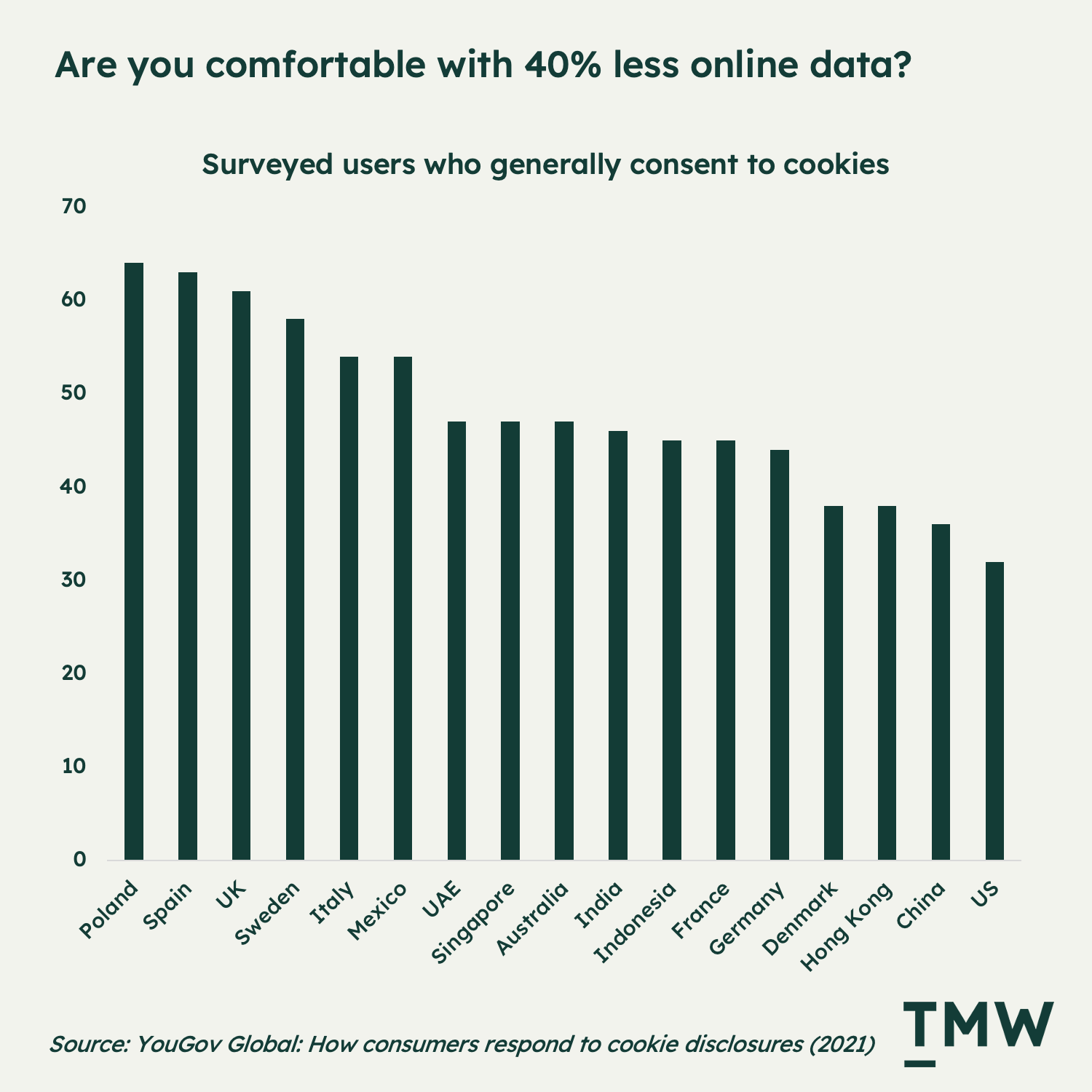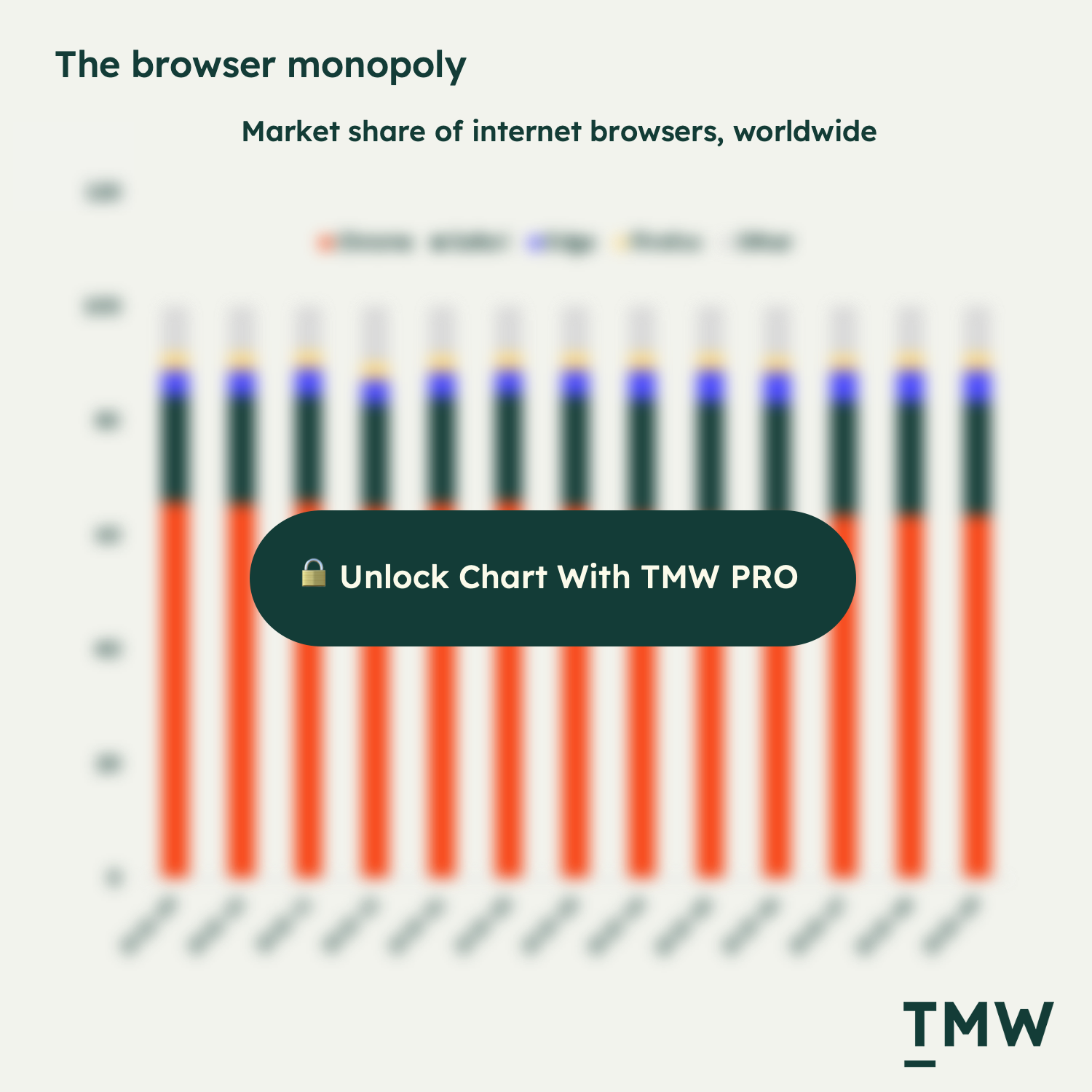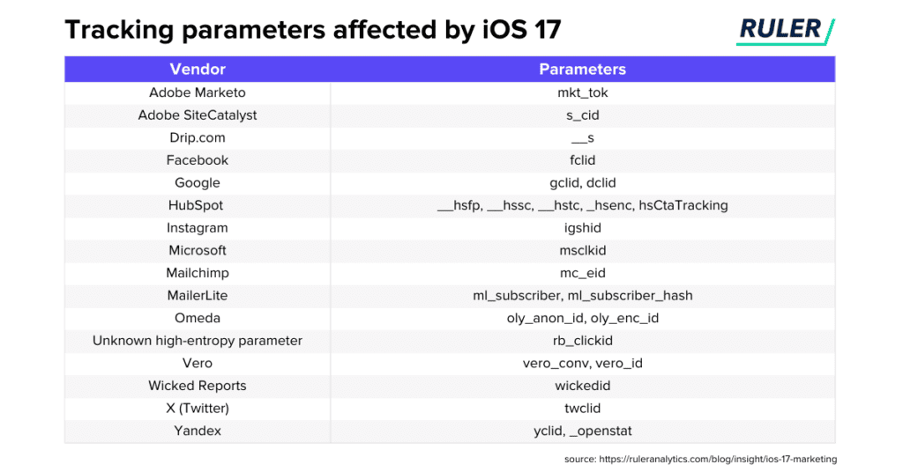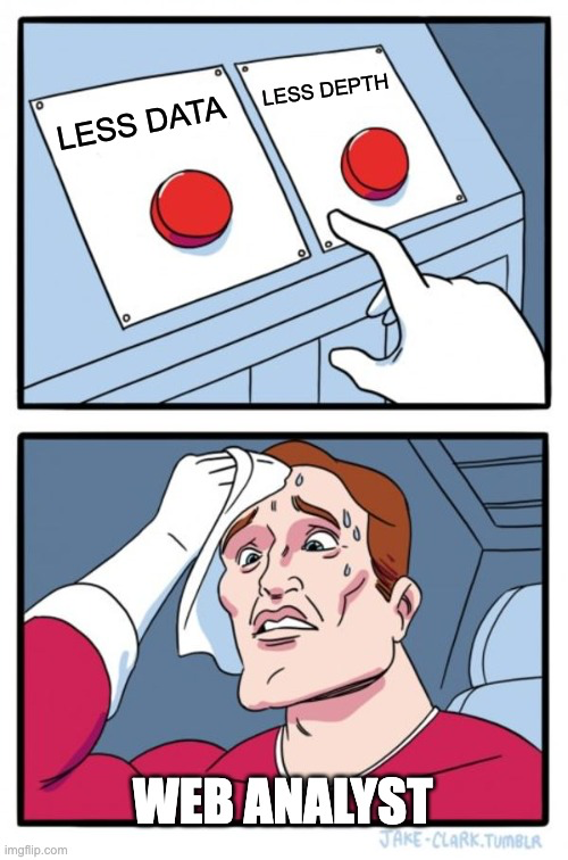TMW #147 | Is there a future for web analytics?
Welcome to The Martech Weekly, where every week I review some of the most interesting ideas, research, and latest news. I look to where the industry is going and what you should be paying attention to.
👋 Get TMW every Sunday
TMW is the fastest and easiest way to stay ahead of the Martech industry. Sign up to get the full version delivered every Sunday for this and every TMW, along with an invite to the TMW community. Learn more here.
Is there a future for web analytics?
I’ve been doing interviews this past week with TMW subscribers (if you would like to take one and share your thoughts, reply to this email!), and I’m getting feedback that I didn’t expect: people tend to use this newsletter as a form of career planning. It’s a surprising revelation to me, but a lot of folks use TMW to see around the corner of the next tech trend or indications where parts of the industry could fall into obsolescence.
And one of the things that keeps people up at night is the impact of the shift to privacy and what it could mean for their years of experience built up in a specific domain in Martech. I’ve written a ton on privacy and its second-and third-order effects, but nothing on a category that really sits at the heart of the Martech industry. That domain is web-based analytics, a category caught in the crossfire between government regulators, Big Tech, and our own ethical and moral dilemma about online privacy.
Hard out here
Recently, a question that I constantly ask myself is whether or not web analytics has a real future in the face of major changes to the online privacy landscape. We’ve enjoyed a very interesting and lucrative industry over the past 25 years where you could literally drop a tag, a tracking code, or pixel on your website, collect and send that data to wherever you wanted, watch session recordings of real people navigating your websites, and set up heatmaps and triggers when people interact online… all the while collecting huge amounts of online behavioral data for you and downstream Adtech platforms to use.
What a time. It literally felt like the Wild West. I remember years ago as a young twenty-something, I could literally analyze customer behaviors on apps and websites right down to the granular level, sometimes even pinpointing the individual. It’s where I got my start in the Martech industry. Taking a free and very useful Google Analytics course (that doesn’t exist anymore) was my stepping stone into the marketing tech industry.
Now it seems as though every massive tech company on the internet is restricting the flow of consumer data on their own devices, OS, and marketplaces. Even a cursory look into Apple’s iOS privacy shifts means that soon enough, we won’t be able to use basic things like UTM parameters to track website visits on iPhones, or if someone clicked an email, or downloaded an app.
Similarly, Google’s retreat from third-party cookies on its mainstream browser also seems like an existential risk to the industry. An industry that is desperately looking for the next best tracker only to propose all the wrong solutions.
And don’t get me started about the EU’s attempts to reign in online tracking with the GDPR, which brought us the most annoying and abused permission system we’ve ever seen on the internet, making it even more difficult to collect consumer data and creating confusion for many (and especially the IAB) on what the rules even are to ensure customers are consenting to online tracking.
From all accounts, it seems as though marketers in the future will have an incomplete view of what their customers are doing online, and what little they can glean will be mired in doubt as to whether online analytics can even represent what customers are doing properly. Dear marketer, our governments and the world’s largest corporations are conspiring to destroy and reshape the flow of information and data online. It’s hard out here.
And yet, one of the biggest acquisitions yet in the web analytics space by Contentsquare was announced last week. They have entered an agreement to acquire product analytics platform Heap in a move to bring product, website, and UX analytics into one place. In their explanation as to why Contentsquare is set to acquire Heap is a confident statement that web analytics needs to go deeper into the customer journey. From the announcement:
“Not only are our technologies extremely complementary, but together they can provide customers with a 360 view of the entire customer lifetime journey, from acquisition to conversion to retention, via granular insight into each step of that journey.
Because at the end of the day, customer experience is a relationship, made up of multiple interactions occurring online and offline. And with increasing acquisition costs and fierce competition, the key to sustainable business growth today lies in retaining existing customers and building those lasting relationships with them across all channels. In order to deliver more value to customers and increase Customer Lifetime Value, teams need to understand how they are meeting customer needs and expectations every step of the journey.”
And in the wake of the dramatic shift to GA4, there are plenty of established analytics platforms making money as customers finally have an excuse to off-ramp from a free, usable and widely understood platform that was Google’s Universal Analytics.
Financial analysts are also upbeat about the future prospects of the industry, saying that the web analytics market reached close to a $5 billion valuation in 2022, and is set to balloon into a $13.2 billion category.
Clearly, there’s pressure put on the industry, and pressure usually changes the shape of things. The question is: what kind of shape? Will it be crushed into oblivion, or burnished into a solid gold bar? Is it the end of the line, or really just the beginning for online analytics and what it can offer companies of all shapes and sizes?
Caught in the crossfire
The challenge with web analytics is that it’s stuck in a crossfire between regulators and the companies that have come to define how the internet works. The EU government is on a crusade to implement consent banners for every website, and change the paradigm for what consumers should know about online tracking: earlier this year, knowing full well that the GDPR cookie banners are being gamed by brands and ignored by consumers, the EU government instituted even stricter rules for collecting consent.
As the California CCPA and other country regulations follow the EU’s lead, it seems likely, as Will Julian-Vicary from Clarity Global – an EU-focused data legislation consultancy – argues, that cookie banners could easily become a worldwide default for all web analytics practices and cookie use (including first-party data collection).
A 2021 study from YouGov suggests that most countries are registering a maximum of 60-70% acceptance of cookie banners, and in places like the United States, it’s less than 40%. This chart really tells the story of the problems facing web analytics – privacy policies cutting brands off from a complete view of their own visitors’ and customers' web analytics.

Julian-Vicary further posits that GDPR rules are only going to get worse for web analytics practitioners:
“However, the roll out of GDPR targeted these identifiers by requiring opt-in if, when joined with other data, these identifiers could be used to identify an individual. The impending ePrivacy regulation takes this further too - in that a business cannot store data on a user’s terminal (web browser/device) without prior permission - which means that cookies/browser storage is no longer available either. In addition, an IP Address is also considered personal information under GDPR, so that’s another door closed.”
But what’s unique to the web analytics category isn’t that government regulators are making things harder; it’s also beholden to the whims of a handful of mega-corporations. We’re in a situation where huge companies can make unilateral changes to how data flows on the internet with little regulatory oversight or industry accountability. How much of the world’s data travels through devices and OS? It’s almost a three-way tie between Android (Google), Windows and Apple’s iOS:

But the browser share skews overwhelmingly in Google’s favor, followed by Safari. It’s really Google’s and Apple’s world when it comes to using web browsers.

Apple is taking full advantage of its device leverage, while Google is in a reactive phase, bending to public and regulatory pressure to remove third-party cookies. But what’s to stop both from also blocking first-party cookies – the beating heart of all web analytics tools? Third-party cookies may just be the beginning of an entire online tracking shift beyond the third-party data that’s shared outside of the website.
Apple’s moves are out in the open and are pushing a consumer narrative that everyone other than them is out there to invade your privacy. In TMW #131 | The internet according to Apple, I break down the major moves into consumer privacy over the past few years:
“In 2017, Apple introduced Intelligent Tracking Prevention, one of the company’s first forays into privacy-enhancing technologies, which limits the effectiveness of third-party trackers in Safari. In 2021, they introduced Mail Privacy Protection on iPhone; Apple Tracking Transparency; data privacy labels in the iOS App Store; restricted using Apple’s IDFA (Identifier for Advertisers) for cross-app and website tracking, and brought in iCloud Private Relay, a way to mask your identity online.
In 2023, Apple continues its push to privacy by removing the widely used UTM parameters in links clicked on Safari, Mail, and iMessage. This is something Apple calls Private Click Measurement. It doesn’t stop there: Apple is also cracking down on fingerprinting – a commonly used methodology to identify users that move from the web to an app – by introducing an SDK transparency method called Privacy Manifests.”
Apple’s most recent shift, Private Click Measurement on iOS 17, is the first step in controlling the tracking parameter that marketers have been relying on for years, And while the changes don’t impact things like source, medium, or campaign, and are currently only available with Safari Private Browsing mode, they do modify tracking appendages from ad platforms to ensure that users cannot be identified at an individual level. Which, on the whole, is a realistic and fair change to make. But Mozilla, in its detailed analysis, argues that it does very little to curb the privacy problems with link tracking.

Another problem is that Apple’s changes are reducing Google’s ability to measure and report on returning and new visitors. The main reason is that Google’s first-party cookie expires after two years, while Apple’s Safari 12.1 and above expires in 7 days. This makes the prospect of personalization to returning users or understanding repeat purchasing patterns incredibly difficult.
Clearly, this is creating all kinds of problems for traditional web analytics. You have to ask yourself the question: is recording video of how people use your website a breach of privacy? If it is, how is this ethically aligned with your company?
Companies like Google, Full Story, Contentsquare and Adobe rely on you thinking that there’s no moral or ethical question at all – it’s just smart business sense to get detailed analytics about your users on the web. But it might not matter in the end; if surveilling your own users becomes an illegal act, then a lot of these companies may no longer exist.
The privacy launchpad
Despite the moral conundrum of what kinds of data brands should be collecting and sharing, there are companies innovating in this space, but on the premise of privacy. Plausible and PostHog, Fathom and Matomo are all building “privacy-focused” web analytics packages that don’t use cookies, are GDPR compliant, and can get around cookie consent banners and Apple’s privacy-masking tech. And some of them have grown considerably.
But as analysts and practitioners have pointed out, many of these tools will give you access to a lot more of your web visitors compared to Google Analytics, but functionality and depth of analysis are lacking. So if you’re managing web analytics for your company, which button are you going to press?

At the top end of town, Google is building a consent mode that is intended to do data modeling to fill in data that can’t be collected from opt-out users. GA4 is also increasingly asking marketers to rely on its own proprietary AI model for data analysis. The reason for this is If your consent program is working as it should, Google Analytics will under-report all website data. And despite these changes, it seems as though there’s no real progress on a solution here: Google is effectively asking marketers if it’s okay if they go ahead and use AI to make up the numbers for us – yet another abstraction from real data about real people.
The other edge of innovation is the rise of first-party data-focused analytics platforms. Companies like Factors.ai and Ruler Analytics is taking the approach that relying on web-based data for any marketing-critical decision is close to pointless in the face of privacy change, and so seeing performance across all platforms and channels is the bigger opportunity. Server-side analytics is also playing in this space, which creates an opportunity to move away from browser dependence.
And in one sense they are correct – web analytics is only giving you a shade of the real truth about what your customers are doing. Looking toward incrementality testing and experimentation along with Marketing Mix Modelling (MMM) as ways to get higher-level insights may not be any better either.
After all, web analytics, experimentation, first-party data-focused multitouch attribution, and MMM are all drastically different analytics solutions with different definitions and research goals. How on earth is it possible to combine them to give you any clarity on your digital performance?
Everything is a pixel
The paradoxical part of answering the question of if web analytics has a future is the rise in companies building their own ad networks. If everything is becoming an ad network in the wake of the increasing shift to a more private web, then everything will also become a pixel – a surface area to collect high-value first-party data.
From the past 24 months, here are most of all the major consumer-focused – and some B2B companies – building ad networks:
All of these newly-minted ad networks can only exist on the web if they can viably track performance, segment users, and provide that to advertisers. This means that in a sense, the industry that supports the collection, management, and visualization will be needed to facilitate a lot of that. This again is a paradox; shouldn’t the larger shift to a more private web mean that we should be collecting less data?
It's a yes if you’re a big tech company facing EU regulators; it’s an open question if you’re a multinational retailer wanting to get into ads. This paradox alone says that there’s a bright future for the web analytics industry, as more companies that used to measure web traffic for their own CX and revenue goals now shift into helping other companies do that. There’s a future there, but it’s not going to be the same paradigm as what we’ve enjoyed in the past.
In fact, what’s likely is that privacy rules will motivate legacy companies to collect more data (at greater sensitivity) to bolster their own ad networks and create revenue opportunities in the wake of the third-party cookie collapse. So perhaps the locus of web analytics is changing, to a new value proposition for a new generation of companies that are building their own online analytics capabilities.
The future is about trust
There are so many fascinating challenges facing the web analytics industry right now that it’s hard to keep up. But the through-line here is that the entire industry relies on trust to work. Analytics people need to trust that the data they see on the screen represents real people doing real things in the world, and they need to trust that Apple and Google’s privacy shifts will be good for their jobs and careers (or at the very least good for the end consumer).
But in reality, trust has been broken. The catalyst behind privacy regulations and unilateral moves to restrict data from big tech is that consumer trust has been broken by an unfettered freedom to collect, share, and use whatever we wanted in the past 20 years of web analytics. Apple’s ATT is showing an acceptance rate as low as 5% when apps ask users if they can track them, reflecting a breach of trust, and a recent study into trusts in professions in the UK says that social media influencers and advertising executives are the least trusted people in society. Both are groups that benefit richly from our data-sharing economy.
And when it comes to the diminishing data we can collect and the black boxes we’re supposed to trust to give us insights into our customers, this too is only adding to the trust problem. Years ago I was working with an e-commerce team that would hire and fire based on what they saw in the Google Analytics dashboard, precisely because it reflected the commercial reality of the company. In the complexity the web analytics industry finds itself in today, there’s no clear path toward regaining that kind of clarity ever again.
We had our moment and blew it. At least we got to create some epic dashboards 📉.
Stay Curious,
Make sense of marketing technology.
Sign up now to get TMW delivered to your inbox every Sunday evening plus an invite to the slack community.
Want to share something interesting or be featured in The Martech Weekly? Drop me a line at juan@themartechweekly.com.
